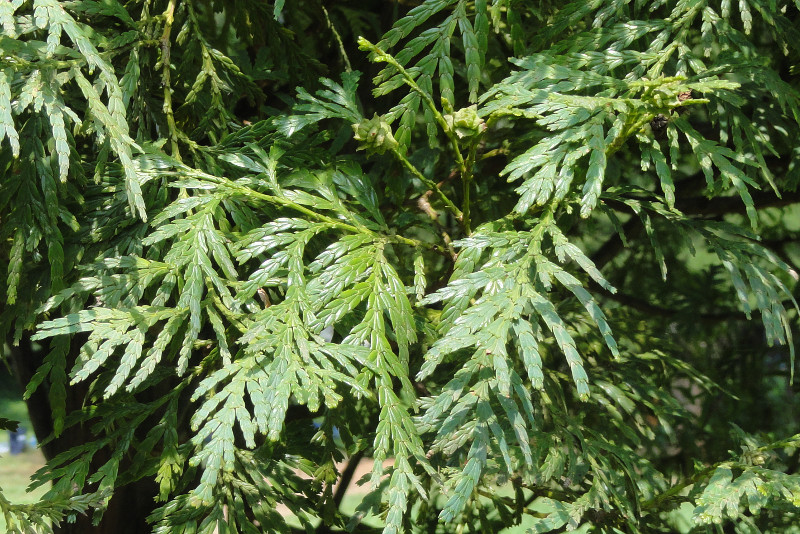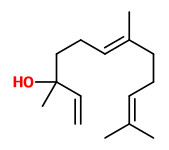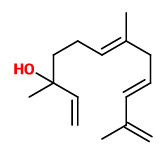Fokienia hodginsii (Dunn) A. Henry & H. H. Thomas - syn.Cupressus hodginsii Dunn; Fokienia kawaii Hayata - Cupressaceae
福建柏 fu jian bai (chin.), Fujian cypress, Fujian-Zypresse, Fokienia, Siam-Holz
Evergreen tree, up to 30m tall, native to Vietnam and eastern China; lateral leaves almost as long as or slightly longer than facial leaves, straight, 5-10 × 2-3mm, on adult plants small, 2-7 mm, ridged and with a white, depressed stomatal band abaxially; pollen cones yellowish green, subglobose, 4-5 mm, seed cones brown when ripe; a vulnerable species in China.
http://www.efloras.org/florataxon.aspx?flora_id=2&taxon_id=200005423
Siam wood oil, huile bois de Siam:
„The wood oil of Fokienia hodginsii L. is separated by distillation, column and gas-liquid chromatography. At least 35 constituents are detected, 24 of which are identified and 3 are structurally evaluated. Main constituents (24% each) are nerolidol and the hitherto unknown 2,6,10-trimethyldodeca-1,3-trans(s-trans)6-trans, 11-tetraene-10-ol (fokienol).“
[Über die Inhaltsstoffe des ätherischen Holzöls von Fokienia hodginsii L. Korthals, H. P., Merkel, D., Mühlstädt, M., Justus Liebigs Annalen der Chemie, 745(1), 1971, 39-58]
Reinvestigation of the Vietnamese wood oil of F.hodginsii L. gave nearly the same composition and percentages as reported in 1971. The oil contains exclusively sesquiterpenes with (E)-nerolidol (35%) and fokienol (26%) as main constituent. Repeated flash chromatography of a polar fraction gave a mixture of β-eudesmol, α-cadinol and dauca-8(14),11-dien-9-ol (3%, biogenetic key compound).
[Constituents of Vietnamese pemou oil - a reinvestigation. Weyerstahl, P., Marschall, H., Phan, T. S., Phan, M. G., Flavour and fragrance journal, Vol.14(6), 1999, 409-410]
„Fokienia hodginsii (Dunn) Henry et Thomas produces a sesquiterpene-rich oil, whose composition has been investigated by a combination of chromatographic and spectroscopic techniques. The three samples analysed, two from Vietnam, the third of unspecified origin, exhibited an oxygenated fraction much more important than the non-polar fraction. (E)-Nerolidol and fokienol, two acyclic sesquiterpene alcohols, were the major components (24-35% and 24-26%, respectively). A few oxygenated compounds, such as α-, β- and γ-eudesmols, α-cadinol and elemol, were present at appreciable contents. Other oxygenated sesquiterpenes differed from sample to sample. Conversely, a few sesquiterpene hydrocarbons were reported in the three samples of F.hodginsii essential oil: δ-cadinene (3.7-6.5%), γ-cadinene (2.3-4.5%), α-muurolene (1.8-2.5%), β-elemene (0.1-0.3%).“
[Analysis of the root oil of Fokienia hodginsii (Dunn) Henry et Thomas (Cupressaceae) by GC, GC–MS and 13C‐NMR. Lesueur, D., Ban, N. K., Bighelli, A., Muselli, A., Casanova, J., Flavour and fragrance journal, 21(1), 2006, 171-174]

Fokienia hodginsii, Kunming Botanical Garden, Kunming, Yunnan, China, 2011
Wikimedia Commons author: Daderot PD


